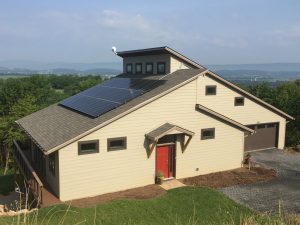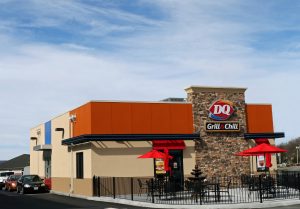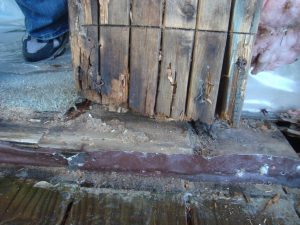Sometimes the little things in our homes aren’t designed at all. I have the opportunity on occasion to share my experiences with students from all levels – Kindergarten to Graduate Students. Recently, I was invited to the Department of Energy to talk building science with graduate student interns spending their summer at the DOE. The room was full of determined and intelligent future leaders. Only one of them had a background in architecture / building science / sustainability. So how do I offer a presentation that is relevant to a group with no knowledge of my industry? I honestly was not sure. I started looking at how the industry has changed in the 20 years I have been in it. In January of 1999 there was almost no home technology being used outside of surround sound in a home theater. Now Google Assistant can call to make you a hair appointment and the salon does not know they are not talking to a human.
Alexa can adjust my thermostat, turn off lights, and turn on white noise in the background when I am going to bed.
These are huge jumps in technology and impact how we want our homes to operate. More important in an energy-efficiency discussion – we keep adding electric demand in our homes that we need to be able to supply. So in this technology driven age what does it mean to be sustainable? In a technology age where clients have access to touch screens to see their home performance, how do you provide solutions that meet their HGTV expectations? What is the balance between energy-efficient, indoor air quality, durability, and affordability? How do you define sustainability – green rating certification or energy usage or healthy?
I used specific projects that I have designed to talk about this idea of “green.” Is a home designed to be carbon neutral “green?”

It has green elements certainly, lots of them, but is it affordable? Does it need to be affordable to be sustainable?
What about a Dairy Queen that is more energy-efficient than other fast food restaurants?

It has solar PV on the roof, reduces water usage, includes day-lighting strategies, and has 100% LED lighting. It checks many of the boxes for a “green” building. Reducing operating costs adds to profit and success. So is it “green.”

Rotted wood wall
We then moved the conversation to things I find in building that are common issues in building science. For instance, a garage inside the envelope of your living space – meaning not detached has a huge impact on indoor air quality. A vapor barrier in a wall system in our mixed humid climate can destroy a building in under 30 years.
It is interesting to present to a young group that grew up with all this technology around them. They are not impressed with the newness of it all – they just want to know how it works and how to use it to future benefit. If you can now 3D print your Christmas toys for the kids, will Target survive? If you can use virtual reality to tour a historic home – will you still see it in person? If you want to live in a luxury home, can that be 3D printed by a robot and you use virtual reality to transform your home into the style you want at any given moment? Maybe that is jumping too far ahead, but the options exist. We are now today seeing homes printed. We are seeing robots replace jobs that people used to perform in construction with higher levels of accuracy. The world is changing quickly, with little things and big steps every day. However, building science remains a constant. We have to understand how all this technology being used in homes will impact our energy demand, our building operations, and quality of life. Building science is so often left out of residential design. We allow our homes to waste energy that we have to pay for monthly. We are ok with poor indoor air quality because we have medicine to make us well again. We don’t mind using too much water because we have plenty. This is not sustainable. There are little things that make your home better – please do them. I hope that message resonated with the students and with my readers.
Here are some little things to make your home better:




